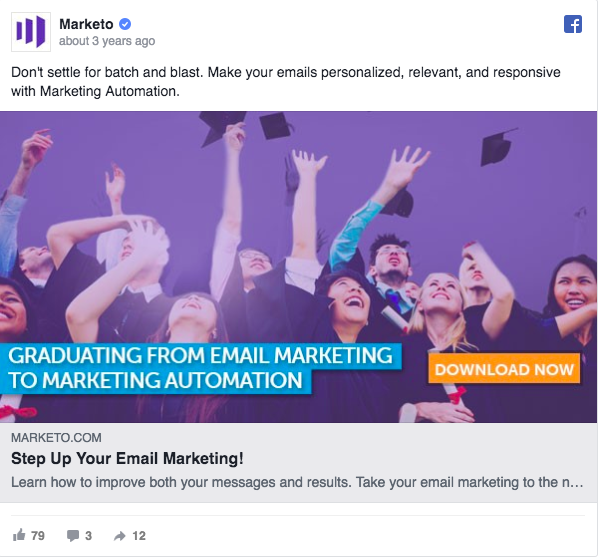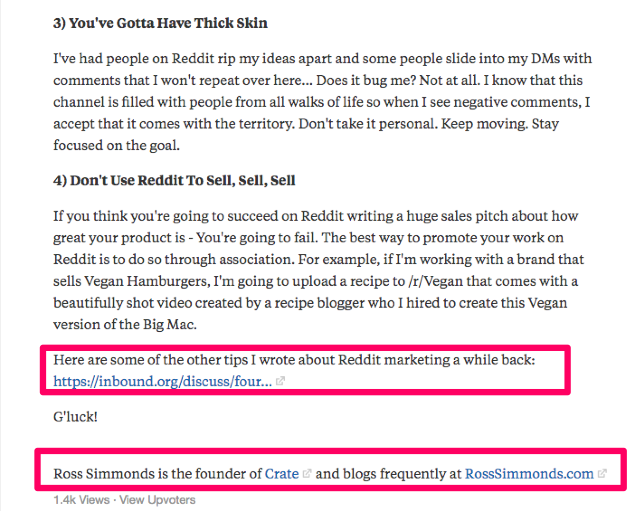Article's Content
A content distribution strategy is a systematic plan that outlines how to disseminate and promote content to reach a target audience effectively. It ensures that the content created reaches as many of the intended recipients as possible, maximizes engagement, and achieves the desired objectives. A content distribution strategy encompasses various tactics, platforms, and channels, and typically addresses the following elements:
- Audience Identification: Understanding who the target audience is, what they want, where they spend their time, and how they consume content.
- Content Types: Determining the types of content that will be distributed, such as blog posts, videos, infographics, webinars, podcasts, etc.
- Distribution Channels: Selecting the channels through which the content will be distributed. These can be:
- Owned Media: Channels that are controlled by the organization, such as its website, email newsletters, and social media profiles.
- Earned Media: Coverage gained through external entities without direct payment, like press mentions, guest articles, or shares by users on social media.
- Paid Media: Platforms where content distribution is promoted through paid efforts, like pay-per-click advertising, sponsored posts, or display ads.
- Promotion Strategy: Outlining the tactics to promote content, such as social media marketing, search engine optimization (SEO), email marketing, and influencer collaborations.
- Scheduling and Timing: Deciding when and how frequently to distribute content, often using content calendars to organize and time releases for optimal impact.
- Measurement and Analysis: Monitoring key performance indicators (KPIs) to gauge the effectiveness of the distribution strategy. Metrics might include website traffic, engagement rates, conversion rates, or any other relevant indicators.
- Optimization: Based on the data gathered, making necessary adjustments to improve content reach, engagement, and overall effectiveness.
Having a well-defined content distribution strategy is crucial because even the highest-quality content can go unnoticed without proper distribution. A good strategy ensures that content reaches its intended audience, resonates with them, and prompts desired actions, whether it’s brand awareness, engagement, lead generation, or sales conversion.
Content distribution strategies have never been more important than today.
A content distribution strategy is a plan that helps an organization disseminate its content, whether it’s promoting the latest blog post or sharing a new ebook. Publishing content can only take you so far; a content distribution strategy makes sure that content is seen by the world.
Content distribution strategies are increasingly important because of the amount of data that individuals and brands are creating each minute.
Look at these stats:
👉 Instagram users publish 46,740 posts per minute.
👉 Twitter users send 456,000 tweets per minute.
👉 There are 3,607,080 Google searches per minute.
👉 LinkedIn has more than 100 million users logging in every day.
👉 89% of marketers say awareness is their brand’s #1 goal
These statistics are mind-boggling, no doubt. But it’s important to recognize the underlying fact these statistics are all pointing to: There’s a whole lot of content being produced each minute and it’s pretty damn noisy.
If you are a B2B business, these numbers should scare you.
B2B marketing has always been challenging, but technology has made it even more so. Your customers are constantly living in the age of information overload and needless to say, getting people to see and consume your content has become a task.
To cut through the noise and grab their attention, you not only have to produce quality content consistently but also do a killer job distributing it.
Producing content is one thing—distributing it is another.
Without distribution, your content won’t reach your target audience. They won’t know about your product, what it does and how it can help them reach their goals. They’ll have no clue why they should park their marketing dollars with your brand rather than your competitor. You won’t have enough leads to sell your product to.
But content distribution has always been regarded as the Achilles’ heel of content marketing. Not everyone knows how to do it right.
For most businesses, content distribution means dumping links on social media, spamming forums, and running ill-planned ad campaigns in hopes of generating leads.
They forget that not every content distribution channel is suited for their business, and that even if a channel works, it won’t give them the same results each time.
To get consistent sales leads from your blogs, ebooks, email newsletter, podcasts, webinars, and any other content assets, you not only need exceptional content but also a solid content distribution strategy. We are talking about the kind of stuff that drives brand awareness, generates leads, and opens the door to conversations with your prospects.
In this post, you are going to learn everything you need to know about creating your own rock-solid content distribution strategy:
- What is a content distribution strategy?
- Answers to the most common questions about content distribution strategies
- How to create one that works for your business
Let’s get started.
BUT FIRST…. I have two gifts:
1. A Content Distribution Checklist that you can download for free.
AND
2. A detailed walk through of some of the best content distribution techniques that you should consider embracing in your company:
What is a content distribution strategy?
A content distribution strategy is a strategic document that an organization creates to guide its marketing efforts for promoting posts, ebooks, resources, and other content assets. The reasons for creating a content distribution strategy are plenty. A document like this kills the randomness and provides structure to the promotion process.
A thoughtful content distribution strategy simplifies the process of reaching the right audience at the right time and convinces them to take the desired action on your content asset, whether that’s downloading an ebook, signing up for a newsletter or booking a demo on your website.
Now that we understand the what and why of a content distribution strategy, let’s tackle some of the other questions you probably have.
Big Questions About Content Distribution Strategies
We know that marketing strategy looks different for every business, and therefore content distribution strategies will differ too. Before you move ahead with building a plan from scratch, let’s answer the three most common questions marketers have about content distribution strategies.
Question 1: Should Different Content Types Have A Different Content Distribution Strategies?
One of the most common mistakes businesses make when distributing their content is using the same distribution strategy for all their content assets. But that’s like submitting the exact same resume and cover letter for lots of different jobs—and we all know the latter never works.
If you’re still unclear on the answer to the big question, it’s yes—different content types should have different distribution strategies.
Before we move any further let’s first understand why that’s important. Content today can be sliced two ways: content format and content type. The format and type of every piece of content plays a significant role in determining the ideal content distribution strategy for your business.
Formats include video, audio, long-form text, text animation, etc. The type could be a case study, research paper, a digital flip book, blog post, webinar, etc.
Let’s look at an example: a podcast.
What do you think you’ll do to distribute your podcast?
Here are a few ideas that may come to mind first:
- Promote it on social media
- Announce it on your blog
- Put a link on your website
- Promote it using cold outreach
But what else can you do?
- Convert the audio to a YouTube video
- Submit it to a podcast directory
- Pull out the best bits to create audio snippets or image quotes (with the help of a photo creator)
- Ask your podcast guest to promote it
Now, take a minute and evaluate how different this strategy might be from promoting an ebook. The same major distribution channels would be in play, I get it, but a lot of the specifics wouldn’t make sense for an ebook. Imagine converting a 40-page ebook into a YouTube video— it may be effective but it is time-consuming. Instead, using exit intent pop-ups, promoting it on thank you pages or even via your signatures or paid social ads is a much better strategy here.
Question 2: How Do I know If The Content Distribution Strategy Is Working?
Now, this is a question I get quite often. Content distribution is tricky. It’s very common for teams to put in a lot of effort to create a content asset, distribute it in a top-notch style, and in the end, fail to get the kind of leads they were expecting. The content may garner a lot of traffic and social mentions, but nothing of real value.
As marketers, we’ve all been there—doing our best to align content distribution with lead generation, brand awareness, and engagement, and not seeing the desired results.
But what do you do when your efforts fail to deliver over and over again?


It’s time for some assessment.
The best way it to do a deep dive into your analytics—coz numbers don’t lie.
Using analytics to check up on how your content performs (and how it impacts with your business’ bottom line) is an expected part of any content marketing strategy. And luckily, there are a lot of software, from Google Analytics, social media analytics tools, AI business tools, and rank tracking tools like Wope to help make this easier for you. You also have tools like Sendible which can help with scheduling, monitoring and reports. You also have tools like Sendible which can help with scheduling, monitoring and reports.
But when it comes to gauging the success of your content, you need to be VERY clear about what you want to measure.
Very often marketers run to vanity metrics such as blog post page views or email open rate and lose sight of what’s important. This causes confusion since these metrics do not lead anywhere.
Not sure which metrics to monitor? This chart will help you match your goals with the right KPIs.


The next step is to get smart about measuring your paid and earned content distribution efforts. While different companies may have different approaches, setting up goals, events and UTM tagging will ensure you get data that’s easy to decode.
The right analytics will show you where you should focus your efforts and which channels aren’t worth your time. Bonus: Analytics reveal the type of content that’s appealing to your audience.
Question 3: Paid Vs. Organic—What’s Right For My Brand?
Should you go the paid route or stick to distributing content organically?
This a tough one again.
From my experience, I feel that it’s best to begin your content distribution efforts organically.
How do you do that?
Once the content is published on your site, push it organically on channels that you own and manage, reach out to influencers, or distribute your content on forums. I recently shared the exact method I use for distributing content on the Everybody Hates Marketers podcast.
Once you’ve mastered the art of distributing content organically, you can slowly and steadily test the waters of paid distribution via channels like Facebook, Twitter, LinkedIn, Google display ads and Amazon.
Now, I get it that paid distribution can be extremely overwhelming at the beginning and that’s why it is advisable to use it to promote only key content pieces such as case studies, ebooks, and white papers. Once you’ve mastered the art of paid distribution you can then apply what you’ve learned to promote all your other content assets. Of course, the budget and approach will differ with each campaign. These tactics also work to promote products and services, whether you’re building an online store and want to boost your e-commerce presence, or whether you have established service offerings you want to further promote online.
Below is a good example from the team at Marketo of using Facebook ads to upsell an ebook.


In the end, whether you should pursue paid or organic distribution boils down to what works for your business and how much money you can put into distributing content.
How To Create A Content Distribution Strategy
By now you should have a clear idea of what a content distribution strategy is, how you should measure your distribution efforts, and whether you should go the paid route or the organic route. Note that hiring and onboarding freelancers for content distribution tasks can provide businesses, particularly startups and small businesses, with financial advantages and flexibility. You should go through a checklist to make sure your onboarding will be productive.
In this section, I’m going to take you through the step-by-step process of creating a content distribution strategy from scratch. Please note that while the examples I’m citing are mostly B2B SaaS, this process works for other B2B and B2C companies as well with just a minor tweak here and there.
Step 1: Understand your target audience
I’m sure you know about user personas and how they align with your overall marketing strategy. Per the Content Marketing Institute:
A marketing persona is a composite sketch of a key segment of your audience. For content marketing purposes, you need personas to help you deliver content that will be most relevant and useful to your audience.
Not every business invests in creating buyer personas, but creating them can help you distribute the right content via the right channels.
MailChimp has done an awesome job of creating personas, and that is reflected in both the quality of the content they produce and the way they distribute it.


Now, I’m sure you are going to ask me, How is persona development connected with content distribution?
Here’s how: Personas will help you envision the things that REALLY matter to your customer, and the content they REALLY want to consume.
When you know those things, content distribution becomes really easy because you not only create content that’s aligned with your audience’s needs (and not created just for the sake of it ) but distribute it in ways that fit your audience’s needs and behaviors.
If you don’t have a well chalked-out persona, there’s no need to panic—just ask yourself a few questions. Who is going to benefit from your content the most? Are they the decision-makers? Is the content helping them connect with your brand? Those are the kinds of questions that will help you “freeze” your target audience.
Step 2: Research the platform where your audience is active
After identifying your true target audience, find out where they hang out and then spend time ensuring that your content is reaching them on those channels.
For example, if you are a B2B SaaS company, you know that your target audience can be found in SaaS communities such as GrowthHackers, SaaS-based Slack channels, and Facebook groups, etc.
If you aren’t sure where your target audience is, a good way to find relevant communities is by doing a quick search on the web, or on sites like Quora and Reddit. You might find your audience frequenting communities created on WhatsApp, Facebook, or Stack Overflow, for example.
For example, if I go to Quora and I do a quick search for the keyword “marketing,” I’m going to find people who are asking questions about marketing. I’m then going to see a question about the best way to use Reddit for marketing a new application.
Now I know from experience that Reddit makes marketers jittery. That’s because a lot of them don’t understand it well.
Having spent numerous hours decoding Reddit, I know this is right up my alley and so and I’m going to respond to whoever asked the question by giving them valuable insights and a valuable recommendation about how they can use Reddit.


When I distribute content for my clients and my internal brands, I start by making sure I know three basics about the target audience:
- Who they’re spending time with
- Where they’re asking questions
- Where they’re spending time online
Once I know this information, I engage with the intended audience in these communities—not just spamming them, submitting a link and walking away, but instead going in first and foremost with value and then referencing the content that I want them to check out, just like I did while answering the question above.


Another platform that makes marketers sweat is LinkedIn, simply because distributing content using LinkedIn is not as straightforward as it is on Facebook Groups or Twitter. Given that 80 percent of B2B leads come from LinkedIn vs. 13 percent from Twitter and 7 percent from Facebook, it is a no-brainer that you need to master content distribution on this platform.
If you are looking to double down on your LinkedIn marketing efforts but don’t know where to start, this post about LinkedIn promotion tactics will come in handy.
Step 3: Create copy that’s customized for the platform
You’ll dress differently for a Halloween party than for a Christmas bash, no?
The reason is simple: Different occasions demand that you do things differently. You may have ham at Christmas, but it is candy all the way on Halloween.
The same is true of distributing content.
Different channels may seem similar from a distance, but the distribution strategy should be tailored to each platform in order to get traction.
A key part of this strategy is understanding the “language” of each channel so you can customize the copy you use to push your content. Instead of just sharing a link to the content asset and waiting for people to get curious and click, you have to tell them what they’ll find inside and how this content will help them achieve a goal.
But how? It depends on the platform. Are these folks talking in 280 characters or meatier paragraphs? Do they prefer plain text or emojis and GIFs?
We always advice conducting in-depth customer research to figure this out. You can also embed content into client portals using various tools to elevate the content planning process.
The next steps are aimed at improving your content distribution efforts by helping you get to know your audience even better. Let’s take a look:
Step 4: Interview your customers
Now, here’s the thing—qualitative research plays a big part in letting you know the EXACT things your customers want to learn, eliminating the guesswork entirely.
Send your customers a survey via email (maybe combine it with an NPS survey) or set up a face-to-face chat. If you’re going the NPS survey route, you can choose an NPS survey tool that works best for you.
The benefits of following this approach are plenty:
- You get to build a deeper relationship with your audience because they know that you are listening.
- You get a better understanding of your audience.
- You are able to create a content distribution strategy that’s tailor-made to your audience and their needs.
Step 5: Evaluate, Rinse, Repeat
The final step of a content distribution strategy is to see how your content is performing. Which pieces are driving the most traffic to your website? Which CTA has worked the best? Which content asset is attracting the most signups to your newsletter?
Consider making use of tools like Evernote and Onenote to organize all your data. With all the data, you can rework your approach as needed, as well as create a content repurposing strategy.
Ready To Rock Your Content Distribution Strategy?
Now that you know what a content distribution strategy is and why it matters, it’s time to build your own.


But before you get started, remember: The game is definitely getting harder and I think being successful now really comes down to not being afraid to experiment with different channels and tactics for putting your story out there.
As marketers we know that content is no longer king—distribution is. And in that spirit, I’m sharing a free distribution checklist that includes over 100 of my most effective distribution tips. So go ahead—download your copy for free today and start driving more results from your content distribution efforts.








